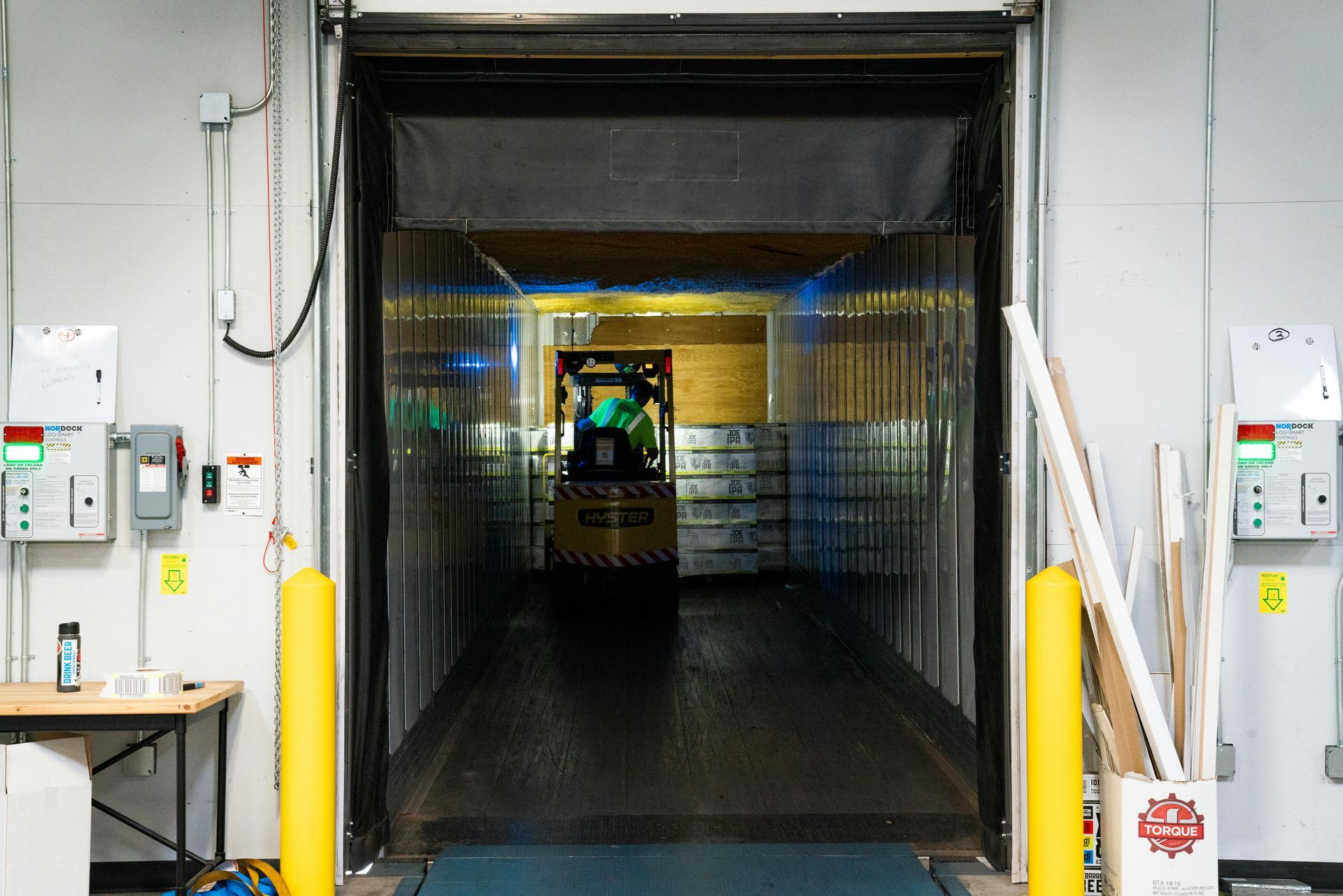How Garage Door Springs Work and Why They Matter for Safety
Garage door springs are like the unsung heroes that make lifting your heavy door feel super easy. They store and release energy to balance the door’s weight, so you’re not stuck wrestling it every time. Whether it’s torsion springs twisting above the door or extension springs stretching on the sides, they keep things smooth and safe. If springs wear out, your door can slam down or get stuck—not fun or safe. Knowing when to call for professional garage door spring service can help prevent bigger issues. Not sure if your area is covered? Take a quick look at our service areas to find out.
Key Takeaways
- Garage door springs counterbalance the door’s weight, enabling smooth and effortless opening and closing.
- Torsion springs twist to store and release energy, ensuring balanced door movement and reducing strain.
- Extension springs stretch to assist door operation, requiring proper tension for safe and efficient function.
- Worn or damaged springs can cause sudden door drops, posing serious injury and property damage risks.
- Regular maintenance and timely spring replacements are critical to prevent accidents and maintain garage door safety.
The Basic Function of Garage Door Springs
Garage door springs are the unsung heroes of your garage setup—they do the heavy lifting so you don’t have to. When you press that button or pull the handle, the springs take on the tough job of counterbalancing your door’s weight. Without the right spring tension, opening or closing your garage door would feel like wrestling a stubborn beast. Think of spring tension as the secret sauce that keeps everything moving smoothly. It keeps your door balanced so it doesn’t slam down or get stuck halfway. When your garage door is properly balanced, you get a safer, easier experience every time. You’re part of a community that values safety and convenience, and understanding this simple function gets you closer to mastering your own space.
Types of Garage Door Springs and Their Differences
Now that you know how springs handle the heavy lifting, it’s time to meet the different types that make it all happen. You’ll mainly find two kinds: torsion springs and extension springs. Torsion springs sit above the door and twist to counterbalance the weight, while extension springs stretch along the sides as the door opens. Both use strong spring materials like high-grade steel to handle the stress, but their design affects their spring lifespan. Torsion springs tend to last longer—often twice as long—because they distribute tension more evenly. Extension springs wear out quicker and might need more frequent replacement. Garage door maintenance plays a huge role in how long either type of spring lasts. Knowing these differences helps you pick the right spring for your door and safety. Plus, understanding spring materials and lifespan keeps you in the loop when it’s time to call a pro.
How Torsion Springs Operate to Balance Door Weight
Since torsion springs do the heavy lifting, it helps to understand how they actually work to balance your door’s weight. Think of torsion spring mechanics like a team effort behind the scenes. These springs sit above your garage door, twisting and storing energy as you open or close it. When you pull the door up, the springs unwind, releasing that stored energy to counterbalance the door’s weight. This clever door weight distribution means you don’t have to wrestle with a heavy slab of metal every time. If your torsion spring isn’t doing its job, consider reaching out for garage door opener repair to keep everything running in sync. Instead, it glides smoothly with just a little effort. Knowing this makes you appreciate the smart engineering keeping your door safe and easy to use. So, next time your garage door opens smoothly, you’ll know it’s all thanks to those hardworking torsion springs doing their twisty magic up top. It’s like having your own strong, silent helper right there every day.
The Role of Extension Springs in Door Movement
You’ve probably heard about torsion springs, but extension springs play a big role too, and they work a bit differently. These springs stretch out along the sides of your garage door, pulling tight when the door closes and relaxing as it opens. That’s the magic of extension spring mechanics—they store energy when stretched and release it to help lift the door smoothly. Now, door tension adjustments on these springs matter a lot. If the tension’s off, your door might slam shut or struggle to open, which can be frustrating—and a little unsafe. You want those springs balanced just right, so the door moves effortlessly without too much strain. Think of extension springs as your garage door’s quiet sidekicks, working behind the scenes to keep things running safely and smoothly.
For commercial settings,
commercial garage doors often rely on heavy-duty extension springs for consistent operation. Now, door tension adjustments on these springs matter a lot. If the tension’s off, your door might slam shut or struggle to open, which can be frustrating—and a little unsafe. You want those springs balanced just right, so the door moves effortlessly without too much strain. Think of extension springs as your garage door’s quiet sidekicks, working behind the scenes to keep things running safely and smoothly. Once you understand how they do their job, you’ll see why they’re more important than you might’ve guessed!
Signs of Wear and When to Replace Garage Door Springs
Extension springs do a great job helping your garage door move, but like any hardworking part, they don’t last forever. You’ll want to keep an eye out for signs of malfunction, like visible gaps in the coils, rust spots, or if the door suddenly feels heavier or jerks while opening. These are your garage door springs waving a little red flag. When you notice these signs, it’s time to contemplate spring replacement before things get worse. Consider scheduling an emergency garage door repair if your door becomes unresponsive or unpredictable. Trust me, no one wants to deal with a door that won’t budge or worse, snaps unexpectedly. If you’re part of the garage door owner club, you know it’s all about staying ahead of problems. So, if your springs look worn or your door acts funky, call in a pro for a quick check-up and spring replacement.
Safety Risks Associated With Faulty or Broken Springs
When garage door springs go bad or break, they can turn from helpful to hazardous in a heartbeat. You mightn't realize it, but spring failure brings some serious safety hazards you definitely want to avoid. Here’s the lowdown on what could happen when those springs act up:
- Sudden Door Drop: A broken spring can make your garage door slam down unexpectedly, which could seriously hurt you or damage your car.
- Door Stuck or Unbalanced: Faulty springs cause the door to get stuck or wobble, making it tricky and unsafe to open or close.
- Increased Strain on Opener: When springs fail, your opener works overtime, risking a breakdown or even a fire hazard.
- Flying Debris: Broken springs can snap and shoot pieces across the garage, which is a nasty surprise you don’t want.
The importance of reliable garage door parts and accessories can’t be overstated—they’re a big part of minimizing these risks before they become emergencies.
Maintenance Tips to Prolong the Lifespan of Garage Door Springs
Taking care of your garage door springs mightn't be the most exciting chore, but it’s one of the smartest moves you can make to keep things running smoothly. First off, don’t skip spring lubrication—it’s like giving your springs a little workout smoothie. A few drops of lubricant every six months can stop squeaks and reduce wear. Next, keep an eye on spring adjustment. If your door feels off-balance or struggles to open, your springs might need tweaking. While it’s tempting to DIY, some adjustments are best left to pros to avoid surprises. Also, regularly inspect your springs for any signs of rust or damage; catching issues early saves you from costly repairs later. Joining in this care routine not only extends your springs’ life but helps you avoid those awkward moments when the door just won’t budge. Want to dive deeper into industrial setups? Learn more about the importance of dock levelers and how they impact overall door performance.
Bonus Tip: Commercial property managers should schedule regular dock safety inspections to avoid wear-related issues that affect loading bays and door function.
Frequently Asked Questions
Can I Upgrade My Garage Door Springs for a Heavier Door?
You can upgrade your garage door springs to handle a heavier door. Choosing the right spring types guarantees they match your door weight perfectly, so you and your neighbors enjoy smooth, safe garage door operation every day.
How Do Temperature Changes Affect Garage Door Spring Performance?
Ever noticed how springs feel tighter or looser with seasons? Temperature fluctuations directly affect spring tension, causing it to expand or contract. You’ll want to monitor this to keep your garage door working smoothly and safely.
Are There Eco-Friendly or Recyclable Garage Door Spring Options?
You can choose garage door springs made from eco-friendly materials that reduce environmental impact. Many manufacturers now offer recyclable options, so you’ll join a growing community committed to sustainability while keeping your home safe and efficient.
What Tools Are Needed for Professional Garage Door Spring Installation?
You’ll need spring installation tools like winding bars, clamps, and a sturdy ladder for professional garage assistance. Don’t forget safety glasses and gloves to protect yourself while joining the community of confident, skilled homeowners handling spring replacements.
How Do Garage Door Springs Impact the Door's Noise Level?
You’ll think your garage door’s a roaring beast without proper spring tension, but when you get it right, you’ll enjoy smooth noise reduction—making your space feel like a peaceful, welcoming haven you belong in every day.
Final Thoughts
Now you know why garage door springs aren’t just metal coils—they’re the muscle behind smooth, safe door movement. You want springs that work right, look for wear, and replace them before trouble starts. Keep them maintained to avoid surprise breaks, costly repairs, or worse, injuries. Take a look at some of our past garage door projects to see how properly functioning springs support the full system. And if you're wondering what others have experienced, our customer reviews speak for themselves.
So, treat your springs well, check them often, and enjoy a garage door that lifts with ease and keeps you worry-free. If you need professional help, don’t hesitate to
contact us for reliable service.
Share this article



